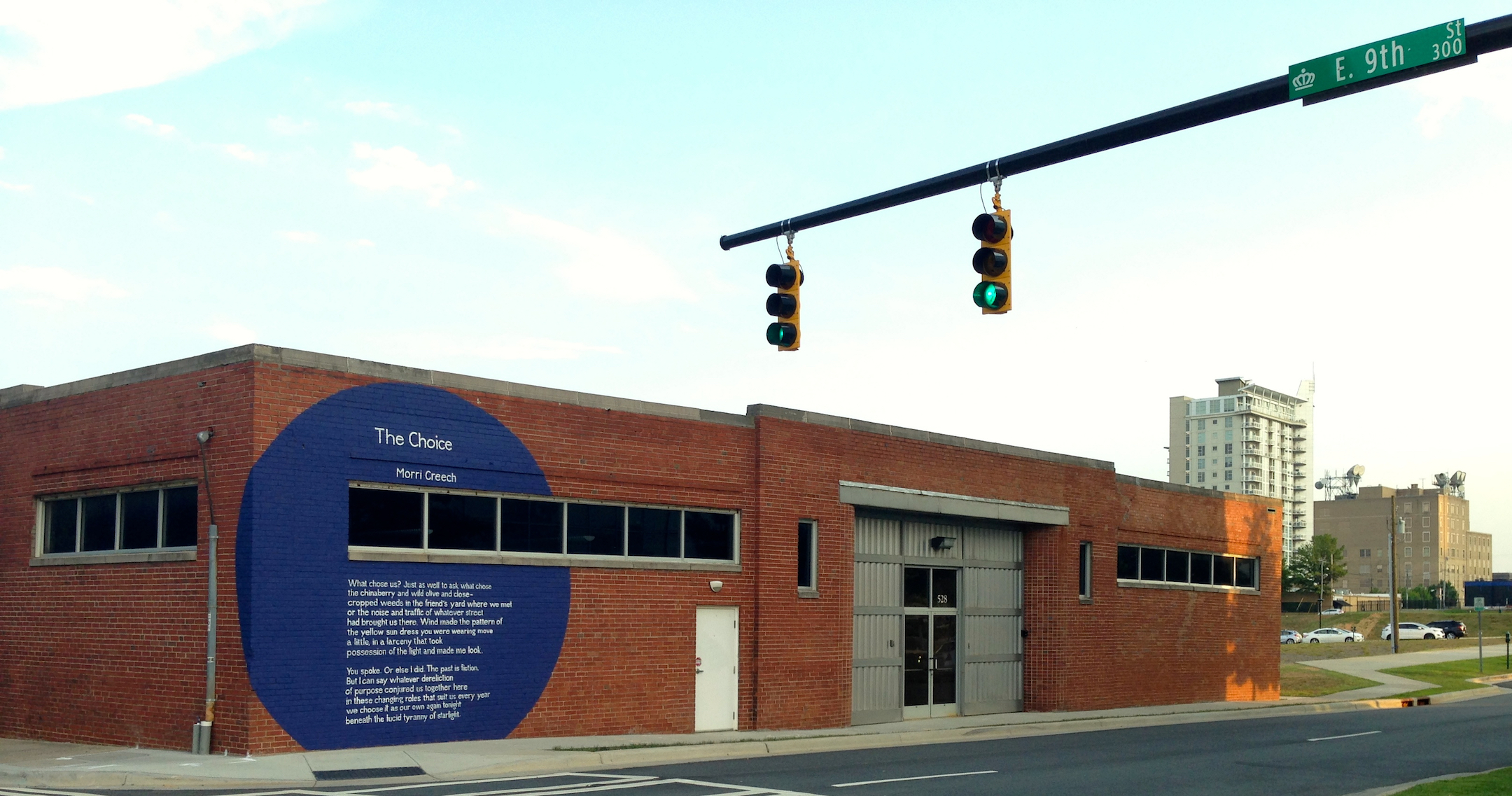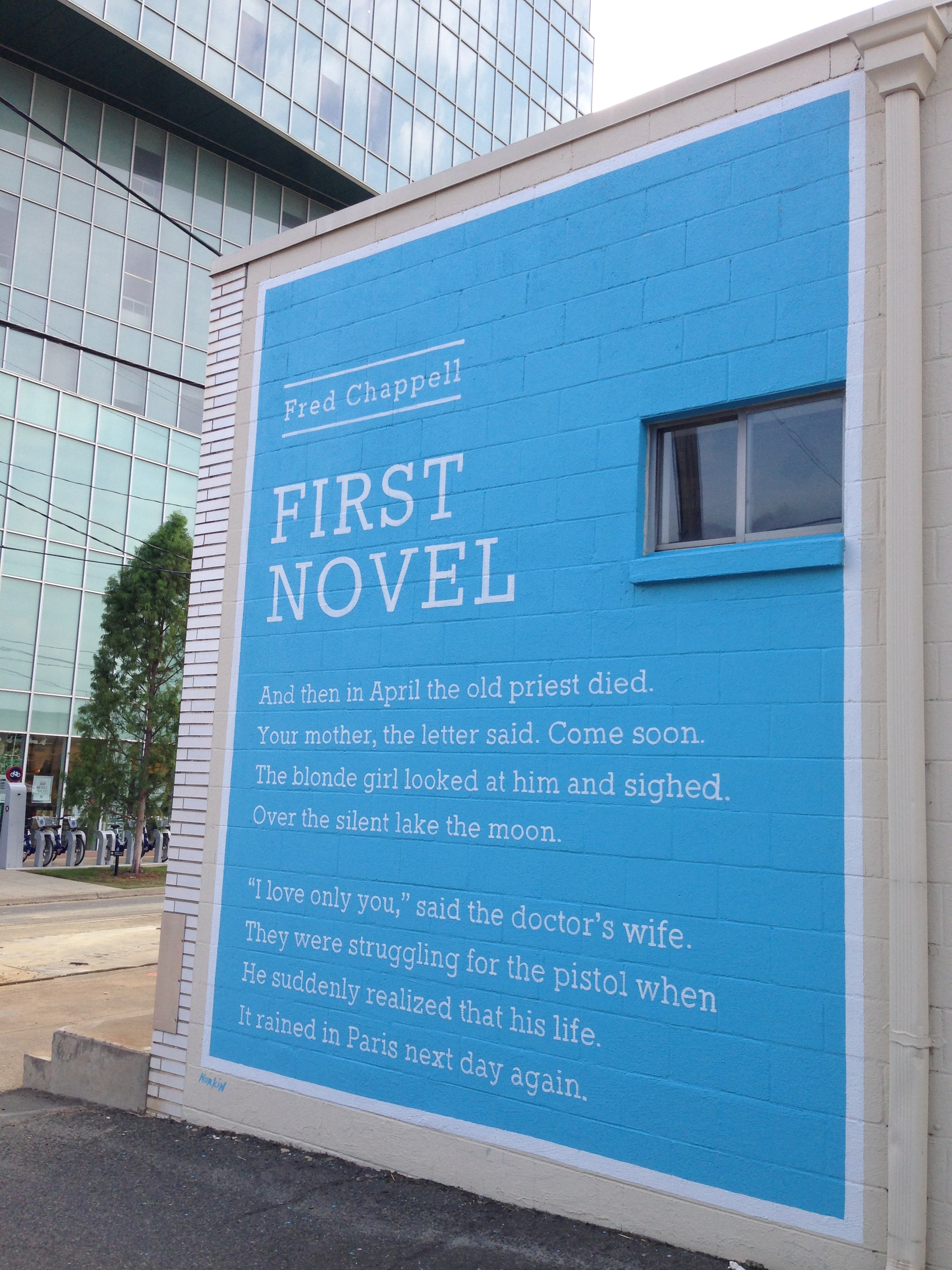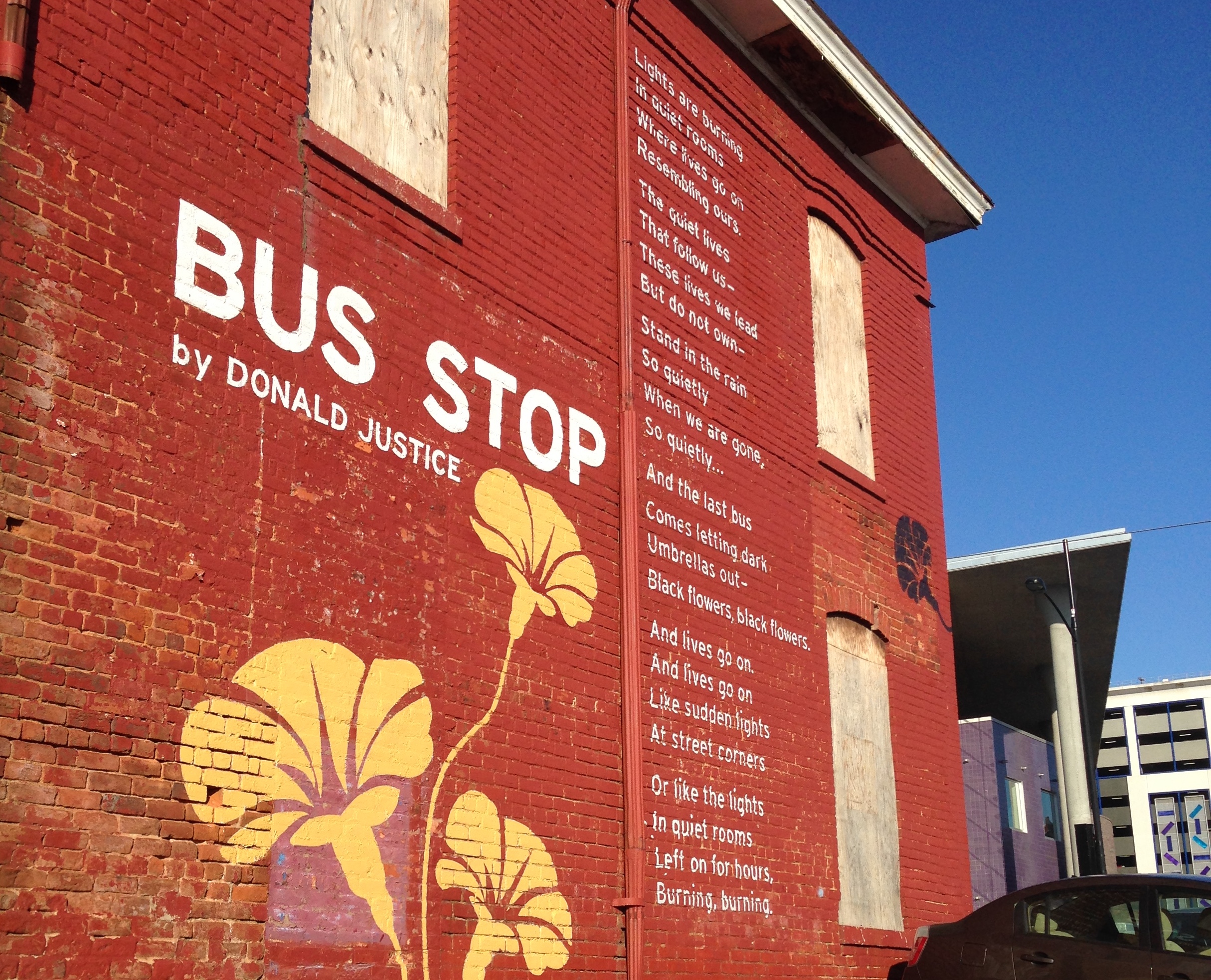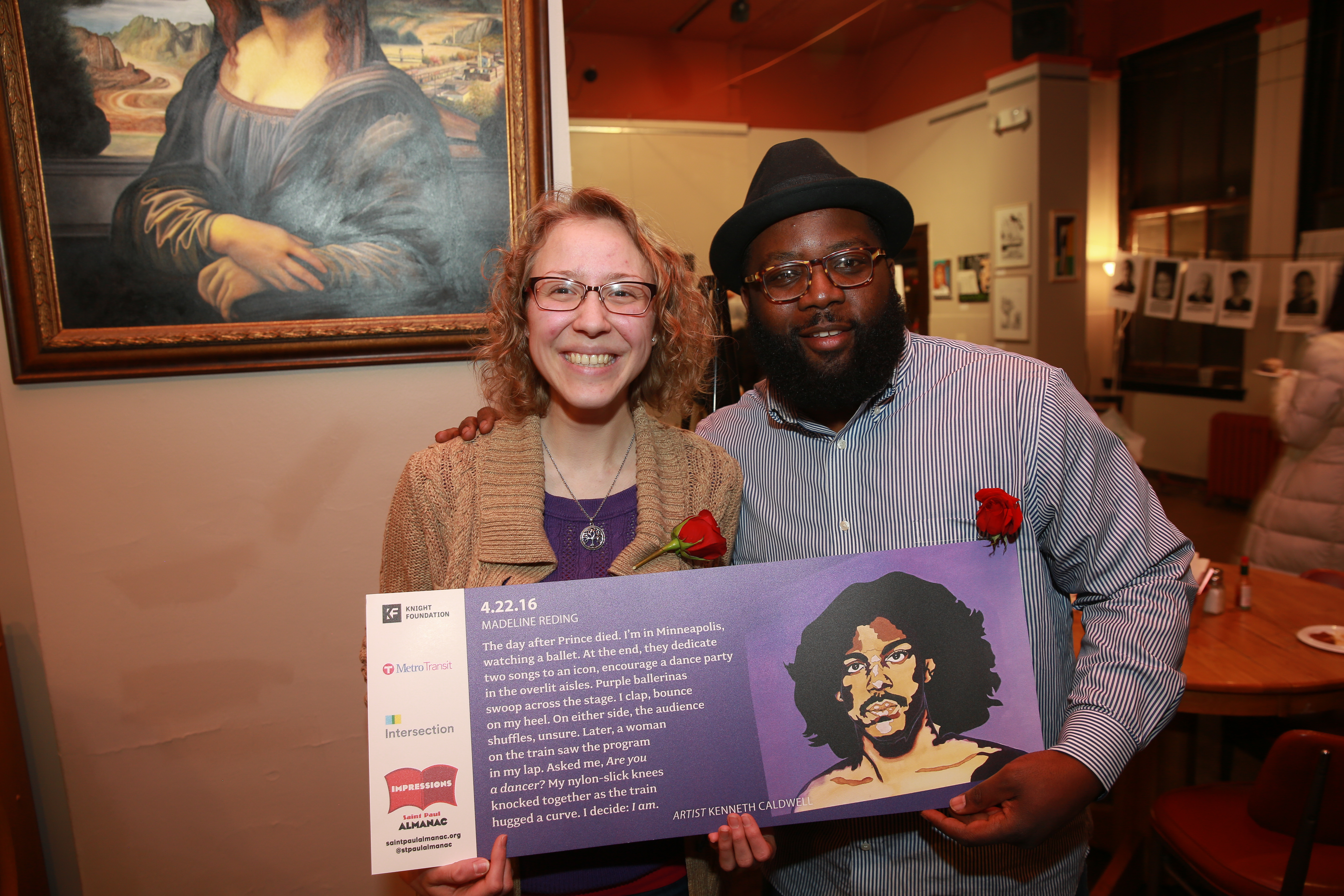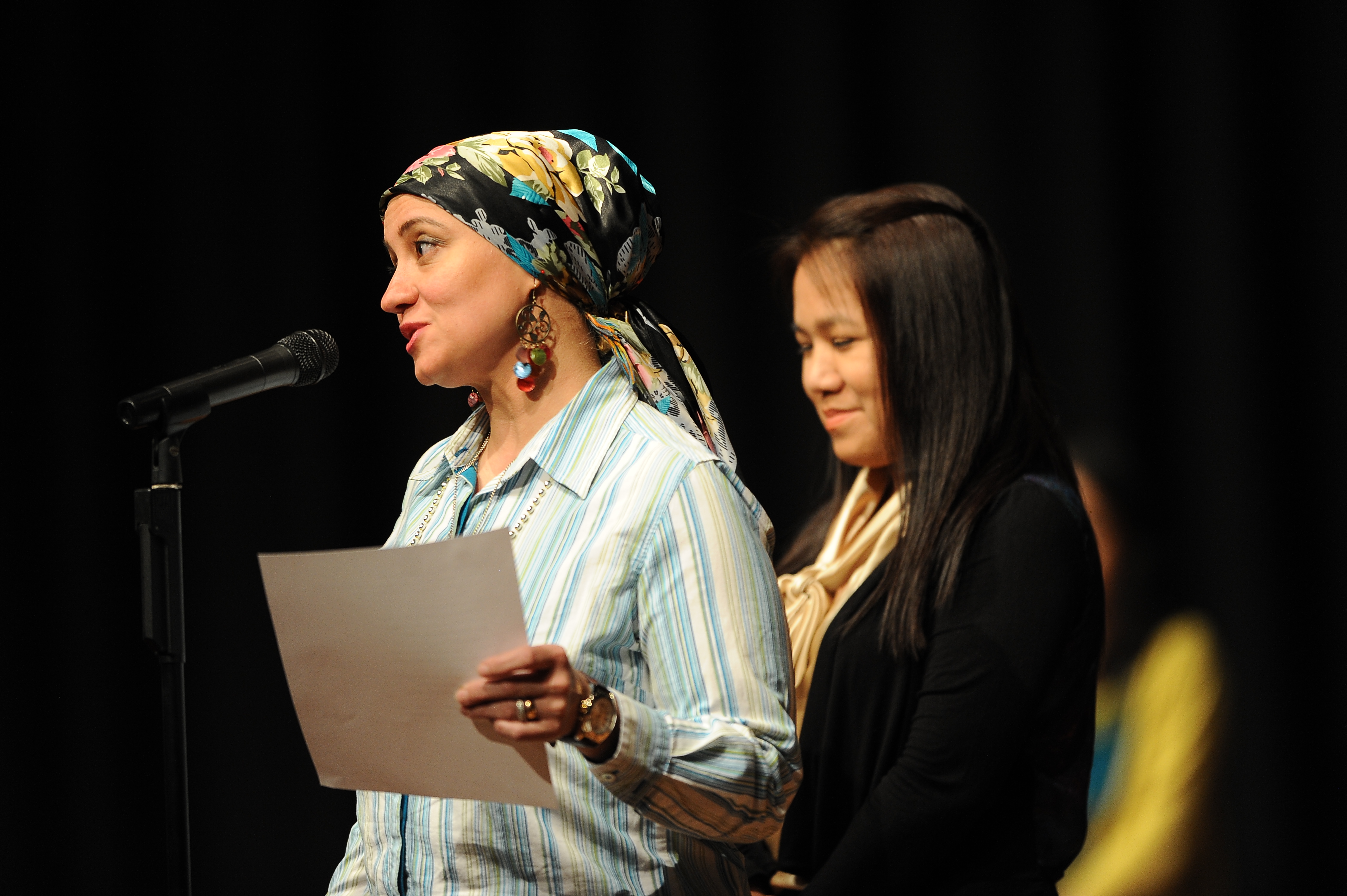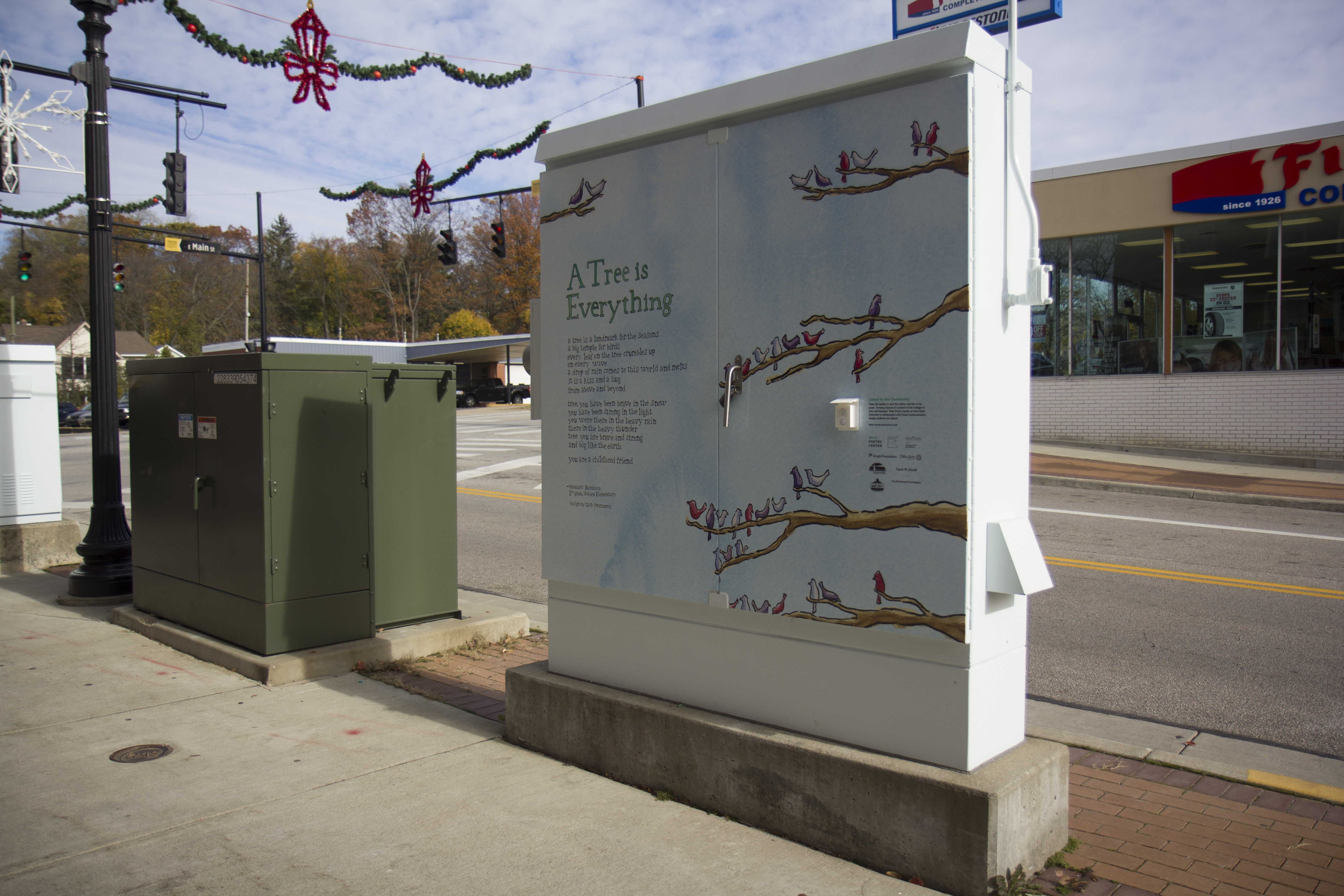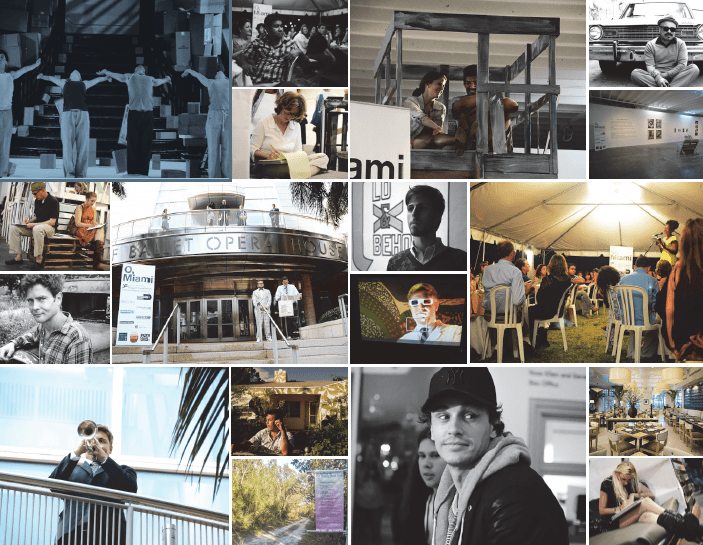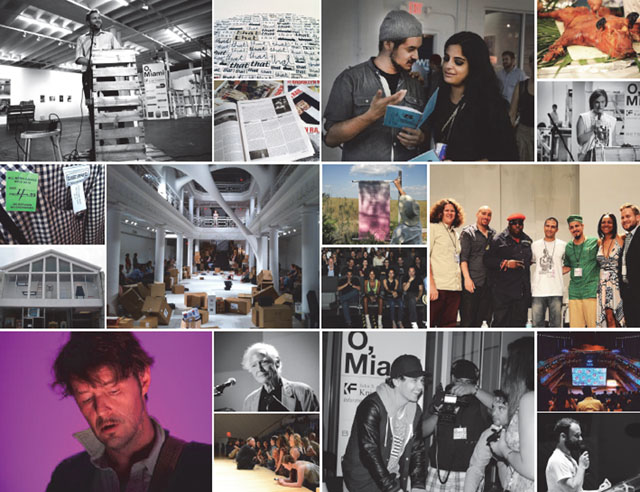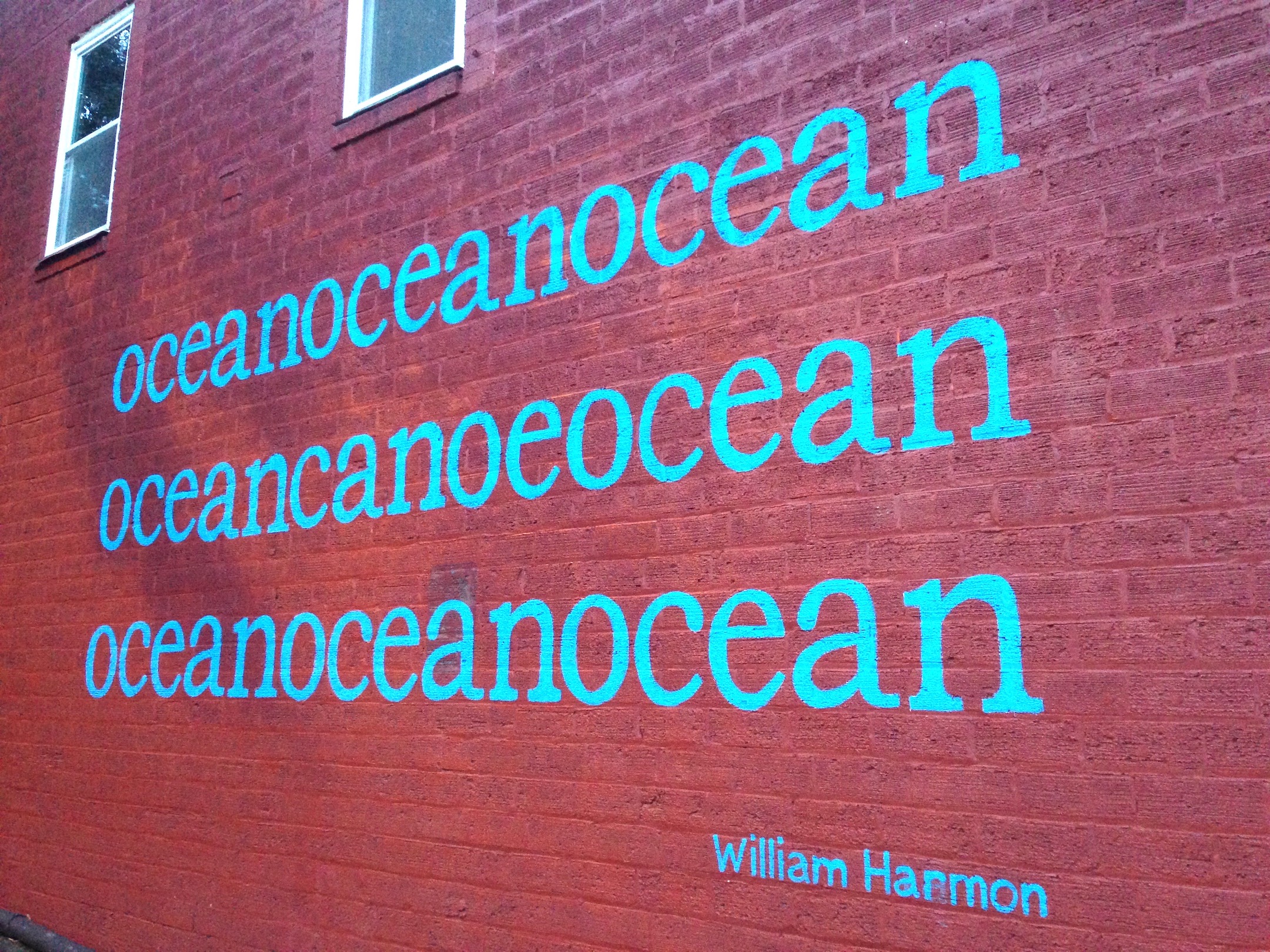
When poetry comes to you
Run an image search for “poet” and you’ll get a lot of variations on white men dressed like either beatniks or old English nobles, most of them holding a page at arm’s length with wide-open mouths captured mid-elocution. The average person probably understands that this is a rather reductive stereotype, but the fact remains that poetry is frequently seen as an elitist pursuit.
That’s a big problem for poetry organizations nationwide. It’s particularly frustrating for people who know poetry’s long history of providing a voice for the less-privileged and who have seen firsthand the effects that writing poems can have on people who might not otherwise think of themselves as poets. If poetry is to remain a viable force in the arts, it needs to be accessible.
Enter a series of Knight Arts grantees, who are bringing poetry to people in a myriad of ways.
A treasure hunt for poems, on walls
Moved by the lack of poetry in people’s everyday lives, and inspired by a similar project in Holland, Charlotte residents Amy Bagwell and Graham Carew decided to place them in unlikely spaces: the walls around their city.
The endeavor, called Wall Poems, began when they approached a friend about placing a poetry mural on the wall of his bar. They quickly learned that any number of local businesses were eager to get the same treatment. “Since then we have been blessed that people approach us for murals rather than us chasing walls, mostly,” Carew said.
Once a project is completed, they let the audience come to the work, likening it to a treasure hunt.
“We never really highlight a new wall. We wait on people to discover them,” Carew said. “We both love the idea of a poem tucked away in a corner probably more than a huge, fresh, five-story wall.”
The two directors have markedly different perspectives on the meaning of public poetry. Carew comes from Ireland, where poetry is regarded as an important piece of the national heritage. Bagwell, on the other hand, is acutely aware of the form’s devaluation in the eyes of many Americans.
“Poetry has been taken away from the people. Like jazz, it’s now largely the realm of academics and the affluent. That’s why Knight Foundation support has meant so much to us. To be able to create five wall poems in Uptown Charlotte in one year meant a poetry explosion in these city walls, in a 24/7, free, open gallery for the people.”
Another key component of Wall Poems is its local nature. All of the mural poems have been the work of North Carolina poets. “Charlotte is a rapidly expanding city attracting people every day,” said Carew. “There is an ongoing conversation about who Charlotte is and wants to be. Meeting Amy…and learning of the rich heritage of literature here in North Carolina, I felt it seemed important to highlight. It gives people ownership of the city and this project.”
“Who normally gets to speak for a city?” O, Miami opens pathways for all
When it comes to getting new eyes on poetry, there aren’t many projects more ambitious than O Miami, the sprawling annual festival that sets a goal of making sure that every person in the county sees a poem before the event is over. That might sound like hyperbole, but these folks take it seriously. “Based on survey, audience and impressions data, we identify neighborhoods or areas where our impact wasn’t as great the year before, and we specifically target those areas in the next festival,” explained Founder and Director Scott Cunningham. “We try to find places that we’ve never seen programming in, that if we saw an event or project listed there, we’d say, ‘Wow, that’s not the usual.’”
As O, Miami spreads poetry to neighborhoods and venues that might not fit the norm, their mission for recruiting poets is even more inclusive. “Who normally gets to speak for a city?” Cunningham asked. “Tourism boards, developers, politicians, etc. Even when those people have the best intentions, it’s still just a handful of people in comparison to the population at large. The real Miami is always much larger than those viewpoints. We see the festival as a way to open the dialogue and let the inhabitants of the city, who are very diverse indeed, speak for themselves. While we do book and present professional poets, our primary focus is on letting Miami write the poems.”
One of the best examples is “Poems to the Sky,” when the festival painted two poems on the roofs of buildings near the flight paths to and from Miami International Airport. Two students from a poetry workshop at a Liberty City elementary school wrote them, and you can see the impact in this video:
This year, O, Miami has appointed a Snapchat poetry curator to crowdsource poems, will host a Day of Thrones poetry field day and will have poetry in supermarket checkout lanes to usher groceries to the cashier.
Many of the ideas for the festival are submitted by the community.
“The entire pleasure of the festival is being surprised by what people will do when you give them a chance to be their best and freest selves,” Cunningham said. “Weirdly, that’s also the pleasure of writing a poem.”
Poetry as expression for new Americans
At Kent State, near Akron, Ohio, Traveling Stanzas uses poetry as a way for recent immigrants to both express themselves and learn English.
The program began in 2009 with a series of writing workshops for immigrants, both adults and children. Instructors employ flashcards featuring simple words and encourage students to use them to create metaphors and images relating to their real lives. “It’s a way of using poetry to get them to work on learning the new language of English and connecting it in an emotional, meaningful way to their own life story,” said Professor and project foundation David Hassler. “We’ve been told repeatedly by adult class participants that this has been a more effective way for them to learn English. We so often teach people how to do things but we forget to help them connect with their own why, their own meaning.”
That newfound meaning has a life beyond the classroom, as Traveling Stanzas has partnered with Akron METRO to place posters featuring poems from the workshops inside the city’s buses in spaces usually dedicated to advertising, with more poems showing up on large window clings in bus stations.
“One of the things that poetry does so well for us, is deeper down it reveals a shared humanity across any borders of language or culture. I think in this moment in our national dialogue, we have a desperate need to feel, not just see and hear, but viscerally feel a connection with each other and with voices of the other. To see the very human face and human voice of these populations of refugees and immigrants who are newcomers to our country.”
Bringing together the literary and visual arts
Looking west to Minnesota, we see another approach to public transit poetry with the St. Paul Almanac’s Impressions. The group combined gave 24 poems to visual artists and asked them to create a piece that responded to it. The result is like a book that moves around the city on transit, said Executive Director Kimberly Nightingale. She credits the support of the Twin Cities Metro Transit system, which employs an arts manager who helps facilitate this kind of collaboration.
By featuring poetry in well-trafficked, public spaces, Impressions is guaranteed to reach audiences who might otherwise have very little chance to experience poetry. To ensure that the voices are just as broad as the potential audience, Impressions turns to a group of curators who are themselves carefully curated.
“It’s an opportunity for an unknown poet to get thousands and thousands of people to see their poetry in a published form on the streets of our city,” said Nightingale.
-
Arts / Article
-
Arts / Article
-
Recent Content
-
Artsarticle ·
-
Artsarticle ·
-
Artsarticle ·
